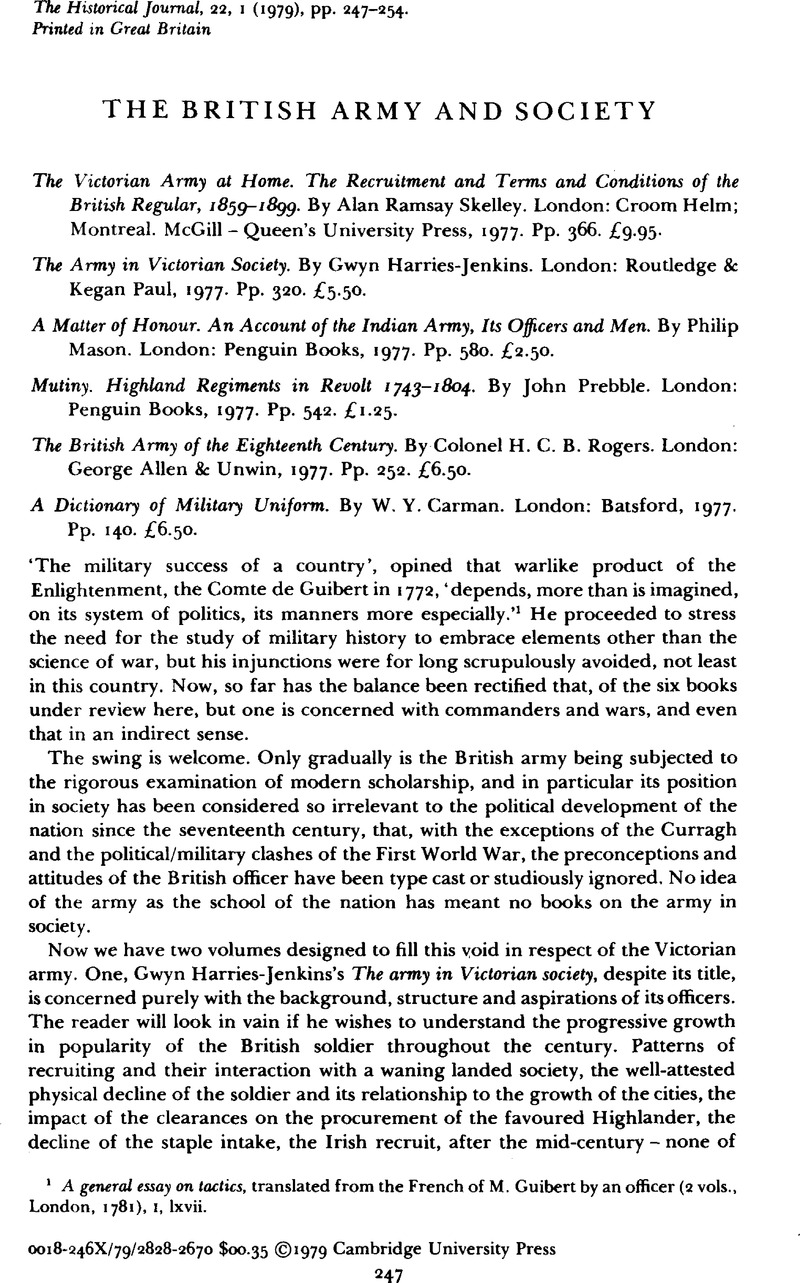No CrossRef data available.
Article contents
The British Army and Society
Published online by Cambridge University Press: 11 February 2009
Abstract

- Type
- Review Articles
- Information
- Copyright
- Copyright © Cambridge University Press 1979
References
1 A general essay on tactics, translated from the French of Guibert, M. by an officer (2 vols., London, 1781), I, lxviiGoogle Scholar.
2 Hart, Jenifer, ‘The genesis of the Northcote-Trevelyan Report’, in Sutherland, Gillian (ed.), Studies in the growth of nineteenth-century government (London, 1972)Google Scholar.
3 Mitchell, in United Service Journal (1838), part 1, p. 168Google Scholar; Napier, W. F. P., Life and opinions of General Sir C. J. Napier (4 vols., London, 1857), IV, 325Google Scholar.
4 For example, memorandum by General Sir Robert Gardiner for Lord John Russell on artillery, 26th Jan. 1848, Royal Archives E 42/51, pp. 5–6, in which he blames the house of commons for all the difficulties besetting the army.
5 SirKaye, John, History of the Indian mutiny of 1857–8 (6 vols. London, 1897), II, 118Google Scholar, gives 4th Lancers, but not H.M.'s. It is apparently the 4th Bengal Light Cavalry, Gimlette, G. H. D., A postcript to the records of the Indian Mutiny (London, 1927), pp. 55–7Google Scholar. The 4th Bengal Light Cavalry were equipped as lancers.
6 Macwilliam, H. D., The official records of the mutiny in the Black Watch (London, 1910)Google Scholar.
7 The only possible exception to this is that 65 of 112 Black Watch mutineers were from clans of Jacobite or rebellious sympathies, but these sympathies were at no stage revealed by them in the course of the mutiny.
8 Mackesy, Piers, The war for America 1775–1783 (London, 1964), pp. 105, 149–51Google Scholar.


